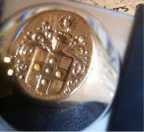from the NY Times
February 25, 2009
NASA Satellite Fails to Reach Orbit
By KENNETH CHANG
A NASA satellite to track carbon dioxide in the Earth’s atmosphere failed to reach its orbit during launching Tuesday morning, scuttling the $278 million mission.
“It’s a huge disappointment to the entire team that’s worked very hard over years and years and really did their best to see it through,” said Charles P. Dovale, the launch manager. “The reason not everyone is able to do this is — it’s hard. And even when you do the best you can, you can still fail. It’s a tough business.”
The Orbiting Carbon Observatory lifted off on schedule at 1:55 a.m. Pacific time from Vandenberg Air Force Base in California aboard a four-stage Taurus XL rocket.
But three minutes later, during the burning of the third stage, the payload fairing — a clamshell nose cone that protects the satellite as it rises through the atmosphere — failed to separate as commanded.
The third and fourth stages burned properly, but because of the added weight of the nose cone, the satellite did not reach orbit.
“The fairing has considerable weight relative to the portion of the vehicle that’s flying,” said John Brunschwyler, manager of the Taurus rocket program for Orbital Sciences of Virginia, which built both the rocket and the satellite.
“So when it separates off, you get a jump in acceleration,” said Mr. Brunschwyler. “We did not have that jump in acceleration. As a direct result of carrying that extra weight, we could not make orbit.”
The satellite fell back to Earth, landing in the ocean just short of Antarctica.
NASA will convene a mishap investigation board to investigate the failure. For Orbital Sciences Corporation of Virginia, which built both the satellite and the launch rocket, it was second failure in eight launches of the Taurus XL.
Mr. Dovale said that Glory, another climate satellite built by Orbital Sciences and scheduled to fly aboard a Taurus XL in June, would not fly until they understand the failure of the Tuesday’s launching.
The carbon observatory was to precisely measure levels of carbon dioxide — the heat-trapping gas that is driving global warming — in the air. Scientists had hoped the new data, covering the entire planet, would help them improve climate models and better understand the “carbon sinks” like oceans and forests and that absorb much of the carbon dioxide.
Sharon Otterman contributed reporting.
NASA Satellite Fails to Reach Orbit
By KENNETH CHANG
A NASA satellite to track carbon dioxide in the Earth’s atmosphere failed to reach its orbit during launching Tuesday morning, scuttling the $278 million mission.
“It’s a huge disappointment to the entire team that’s worked very hard over years and years and really did their best to see it through,” said Charles P. Dovale, the launch manager. “The reason not everyone is able to do this is — it’s hard. And even when you do the best you can, you can still fail. It’s a tough business.”
The Orbiting Carbon Observatory lifted off on schedule at 1:55 a.m. Pacific time from Vandenberg Air Force Base in California aboard a four-stage Taurus XL rocket.
But three minutes later, during the burning of the third stage, the payload fairing — a clamshell nose cone that protects the satellite as it rises through the atmosphere — failed to separate as commanded.
The third and fourth stages burned properly, but because of the added weight of the nose cone, the satellite did not reach orbit.
“The fairing has considerable weight relative to the portion of the vehicle that’s flying,” said John Brunschwyler, manager of the Taurus rocket program for Orbital Sciences of Virginia, which built both the rocket and the satellite.
“So when it separates off, you get a jump in acceleration,” said Mr. Brunschwyler. “We did not have that jump in acceleration. As a direct result of carrying that extra weight, we could not make orbit.”
The satellite fell back to Earth, landing in the ocean just short of Antarctica.
NASA will convene a mishap investigation board to investigate the failure. For Orbital Sciences Corporation of Virginia, which built both the satellite and the launch rocket, it was second failure in eight launches of the Taurus XL.
Mr. Dovale said that Glory, another climate satellite built by Orbital Sciences and scheduled to fly aboard a Taurus XL in June, would not fly until they understand the failure of the Tuesday’s launching.
The carbon observatory was to precisely measure levels of carbon dioxide — the heat-trapping gas that is driving global warming — in the air. Scientists had hoped the new data, covering the entire planet, would help them improve climate models and better understand the “carbon sinks” like oceans and forests and that absorb much of the carbon dioxide.
Sharon Otterman contributed reporting.




